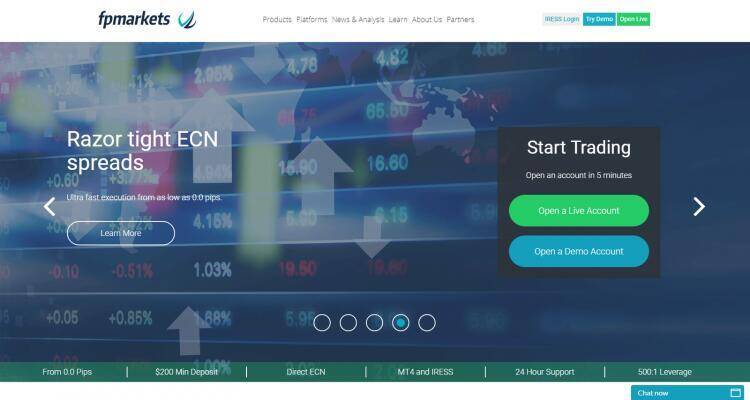Contents:


The most flexible of the SDLC models, the spiral model is similar to the iterative model in its emphasis on repetition. The spiral model goes through the planning, design, build and test phases over and over, with gradual improvements at each pass. This high-risk SDLC model throws most of its resources at development and works best for small projects. It lacks the thorough requirements definition stage of the other methods. Popular SDLC models include the waterfall model, spiral model, and Agile model. Agile defies basic Waterfall scheme of things and makes the entire process of design, development and testing an ongoing flow where developers, managers and customers all contribute together.

Waterfall phases run sequentially, and every stage depends directly on the outcome of the previous phase (i.e., each step “waterfalls” into the next one). In a true waterfall model, the team never goes back a step after finishing a phase, so the model’s success rests on the team’s ability to avoid mistakes. This stage requires a combined effort of business analytics, operations, leadership, development, and security teams.
Operations and maintenance
When it comes to accomplishing anything of value, it is ideal to develop a structure to ensure that you can plan every step of the way. It will not just prevent confusion, but it also enables you to brace yourself mentally for the responsibilities at hand. This is a sort of document that specifies all those things that need to be defined and created during the entire project cycle. Find security issues early with the most accurate results in the industry and fix at the speed of DevOps. It provides an effective framework and method for developing applications.
- This model is ideal for projects where there is a high degree of risk involved.
- It requires a deep level of customer involvement and can turn problematic when delimiting functions and features.
- This method promotes communication among various teams and departments.
- Every phase of the SDLC life cycle has its process and deliverables.
During the analysis phase, a programmer develops written requirements and a formal vision document via interviews with stakeholders. This process goes on until customers have no more negative feedback, after which the team gets a customer-driven requirements analysis and starts developing the final product. SDLC strategies have been around since the 1960s, and most of its core concepts have evolved over time.
Process checks include review of timelines and expenses, as well as user acceptance. For the IBM’s computer communication protocol, see Synchronous Data Link Control. Secure SDLC is a software life cycle with fully integrated security checks at every phase. Teams start thinking about security risks and measures during the first stage of the SDLC.
The reason it is not favored much is that the model is run on a fairly inflexible structure conditioning that the entire set of requirements should be determined from the very beginning of a project. This limits the freedom and flexibility of actual design and development. If the software has performed well through all the previous five steps, it comes to this final stage called maintenance. The product here is properly maintained and upgraded as and when needed to make it more adaptive to the target market. From quality, accuracy, and precision, the Software Development Life cycle acts as a methodical, systematic process for building software or a mobile application.
This method promotes communication among various teams and departments. It is easier to make sure that everyone is on the same page and that any concerns are dealt with promptly by holding regular meetings and evaluations. This model is quite inflexible and does not allow for much alteration once a phase has begun. Once the project is tested (which also involves User Acceptance Testing ), it is deployed at the client’s end.
Step #2. Architecture and Design
For example, the waterfall model works best for projects where your team has no or limited access to customers to provide constant feedback. However, the Agile model’s flexibility is preferred for complex projects with constantly changing requirements. In this model, a prototype is built and developed to act, feel, and behave like an early approximation of a final software solution. Usually, a prototype is reworked and refined until it reaches an acceptability stage from which a finalized solution can be developed.
Muhammad Raza is a Stockholm-based technology consultant working with leading startups and Fortune 500 firms on thought leadership branding projects across DevOps, Cloud, Security and IoT. Executive decision makers should answer and document these questions and study them carefully—before proceeding with the software design and implementation process. Not every single requirement will be feasible for your current scope.
If you want to give your career a boost, then the IBM Full Stack Software Developer Professional Certificate might be what you want. It allows you to learn about different programming languages and modern software development approaches and technologies. Master your software language and then learn more to build your toolbox. Once you have experience with one language , it’s time to expand your knowledge base by learning new languages and frameworks.
Inception phase (analysis of the project’s needs, goals, and scope). The cost often spirals out of control if the team goes through too many iterations. An extension of the waterfall approach with superior defect detection. Different SDLC methodologies prioritize different aspects of product creation and measure success in unique ways. Let’s look at the most popular SDLC methodologies you can adopt at your company. Most teams rely on automated tests to speed up this phase, but some manual examinations are also valuable .
Which Software Development Life Cycle methodology is right for you?
Waterfall model is simple to follow and clear milestones and deadlines also. This detailed model documentation and reinforces good codding habits. Waterfall model provides a solid structure, but it is not suitable for large and complex projects. This model is highly inflexible to scope changes, and it isn’t easy to estimate time and budget precisely.
7 Best Ethical Hacking Tools & Software (Mar 2023 Update) – DataDrivenInvestor
7 Best Ethical Hacking Tools & Software (Mar 2023 Update).
Posted: Tue, 28 Mar 2023 07:00:00 GMT [source]
The biggest drawback of this model is that small details left incomplete can hold up the entire process. The iterative method, as the name goes, deals with several iterations throughout SDLC cycle. By keeping it like Waterfall, the Iterative approach repeats the method in several stages of development instead of spanning it as whole across entire SDLC. A little too old and rigid, the Waterfall is one of the old-fashioned SDLC models that are not much preferred in modern software development ecosystem. After the analytical part is complete, the design is the next step that needs to look forward to. The basic aim in this phase is to create a strong, viable architecture of the software process.
Stage 3: Designing the Product Architecture
They also need to use https://traderoom.info/ tools like compiler, interpreters, debugger to generate and implement the code. Every business, at some point, faces the same question, regardless of the industry niches they target or position that they occupy. This remains a persistent need for the business of every size, regardless of a software company or a business down the street that makes canoes. Once they start doing it correctly and they realize need to cut cost, make it speedy and ameliorate it with time. Want to improve application quality and monitor application performance at every stage of the SDLC?
In this phase you get to earn the trust of your stakeholders by embodying a builder’s mindset. By this stage you know what your requirements are and what you want. How users would interact with the product was still very much unknown. This stage of the SDLC forces you to obtain feedback and buy-in from relevant internal and external stakeholders. Another idea is that you could test solutions on the market to better understand the pitfalls of existing software.
All SDLC methodologies share a common ground of distinct phases that include planning, analysis, design, building, testing, deploying, and maintenance. These SDLC phases provide the outline of what a software application project entails. The software developers team would approve the designing phase and further evaluate the coding and project path to meet the predefined objectives and product goals. The needs of clients are of paramount importance and it is made sure after the designing phase before the full-fledged software development life cycle begins further. Software development outsourcing requires a foolproof approach to defining your business objectives and how you want the digital product to stick to them. For instance, if you are to make a car, you should have the farsightedness to visualize how your car will look.
Management and control
It may require excessive documentation because of huge intermediate phases. It is difficult to change the functionality of an application once it gets to the testing stage. It is ideal for small projects where all the requirements are well-understood.
Perforce’s Automotive Software Development Survey Reveals … – RealWire
Perforce’s Automotive Software Development Survey Reveals ….
Posted: Tue, 28 Mar 2023 13:00:29 GMT [source]
The approach has stood the test of time and has been used since the 1970s. The Waterfall model is a sequential design process that moves in a straight line from one phase to the next. The final stage of the software development life cycle is maintenance and operations. This is one of the most critical stages because it’s when your hard work gets put to the test.
In the Simportance of sdlc in software development, security processes are implemented in all stages of the development life cycle. This is widely accepted as a security best practice to improve resilience to cyberattacks. It’s important to note that the software development life cycle is not the same as project management.
Rapid application development (RAD)
At the completion of this phase you are able to ensure that what you have built works. You can’t produce a final version of a product without eating your own “dog food”. Specifically you are looking to show a bias towards action and develop a prototype or system that others can experience. This is the build phase in which you seek not to answer questions but to produce outputs.

From the planning phase to the maintenance phase, each part is crucial to the success of any project in the software engineering industry. The deployment phase involves releasing the software to the customer or end-users. During this phase, the development team installs the software on the customer’s systems or makes it available for download. SDLC models are the methodologies employed by organizations in the development of software. The main types of SDLC process models include waterfall, spiral, iterative, agile, and V-model. It may first be deployed to a limited customer segment to conduct user acceptance testing .
They analyze the requirements to identify smaller coding tasks they can do daily to achieve the final result. Once you’ve got your design plans in front of you, it’s time for wireframing and mockups so that everyone involved knows exactly how their part will fit into the larger design picture. You have many tools available that make this process much easier than ever before. This step builds upon the planning stage, building out the tasks you need to do in the work breakdown schedule. Learn how the seven stages of SDLC help developers bring new software products to life. This SDLC testing model helps the team to adopt elements of one or more process models like a waterfall, incremental, waterfall, etc.

The product leaves the testing phase and is ready to go into production. Some projects require the team to write user manuals or create instructional videos before the software becomes available to end users. While every SDLC is unique, all life cycles go through similar steps. Let’s take a close look at every typical phase of an average software development life cycle. Developing a fully-functioning piece of software and information system is a monumental undertaking. The use of SDLC ensures that such an undertaking is properly documented and structured, making what seems impossible entirely doable within a reasonable timeframe.
The six phases seek to build on each other in an efficient manner to answer questions and to ensure alignment in your development process. This step involves decomposing the system into pieces, analyzing project goals, breaking down what needs to be created, and engaging users to define requirements. System assessments are conducted in order to correct deficiencies and adapt the system for continued improvement.
